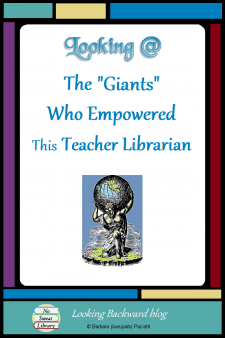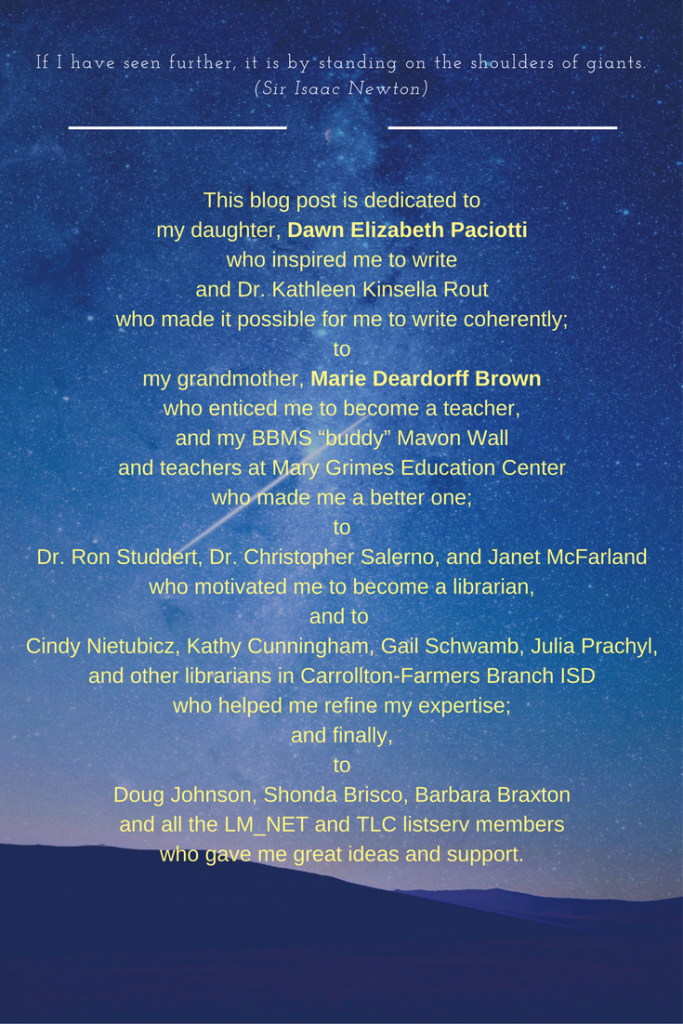 MY LIBRARIAN INFLUENCERS
MY LIBRARIAN INFLUENCERS
PODCAST INTERVIEW WITH
DR. LAURA SHENEMAN
I believe our only purpose as a school librarian is to educate our youth. Books may be perfectly arranged on shelves and electronic devices hum, but the students that pass through our doors are the most important reason we are where we are. We can’t forget that. A kid is more important than a book or a piece of equipment or any other material in our school library. All those other things are expendable; a child is not. Even the difficult ones.
I make this point on my blog, and I make it in my interview with Dr. Laura Sheneman, the producer and host for the Librarian Influencers Podcast.
The Librarian Influencers Podcast highlights experienced librarians who share their knowledge and expertise with other K-12 school librarians, especially those new to the field or studying to become school librarians.
Dr. Laura Sheneman taught Library Science graduate courses for more than 10 years at Sam Houston State University, and then was Coordinator of the Division of Instructional Support at the Texas Education Agency Region 1 ESC along the Rio Grande River in South Texas. Now she is a professor of school library media at the University of West Georgia.
 I feel so honored to be part of the group of librarians Dr. Sheneman has presented in her Podcasts. She gives an introduction and overview of our talk as a post, which includes links to both her podcast page and her libsyn.com page for the audio interview.
I feel so honored to be part of the group of librarians Dr. Sheneman has presented in her Podcasts. She gives an introduction and overview of our talk as a post, which includes links to both her podcast page and her libsyn.com page for the audio interview.
To hear our interview, which I hope you find helpful,
please visit Dr. Laura Sheneman’s Podcast.
I had a wonderful time talking with Dr. Sheneman. We discovered a shared vision about what a School Library Program can be, and much common ground on policies & procedures.
I’ve read Dr. Sheneman’s blog and listened to all her podcasts. She is now an important part of my professional learning network. When you listen to her podcast interviews with veteran librarians, I know you’ll want to add her to your PLN, too.
![]()



